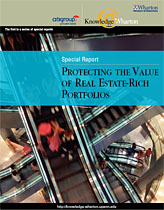Sweet Spots amid Uncertainty
Coyle says his team is spending a lot of time scouting for opportunities in China, India and Japan. He’s upbeat on Japan, especially with the recent recovery in its economy. He also expects “a ton of assets” heading for sale after February 2006, when a new law will take effect requiring corporations to price their assets at fair market value. “You are going to see more and more assets brought to market on behalf of corporations, not just government-owned stuff,” he says.



